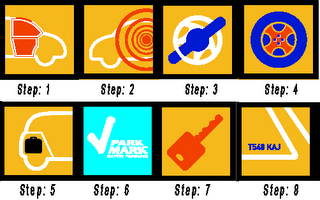Wednesday, February 4, 2009
Following the advice below will reduce your chance of being a victim of
vehicle theft:
Step : 1
Secure the doors, windows, boot and sunroof every time you leave the car.
Step: 2
Get an electronic immobiliser professionally fitted by a member of the Vehicle Systems Installation Board (VSIB) if your car has not already got one. You might also consider getting an alarm fitted. But in each case make sure you buy a product that is either hatcham compliant or Sold Secure approved. Remember, some security devices may get you a discount on your insurance - check with your insurer.
Step: 3
If you do not have an electronic immobilizer fitted, use a mechanical immobiliser such as a steering wheel lock every time you leave your car. Again, make sure it is Thatcham compliant or Sold Secure approved. Mechanical immobilisers are a relatively inexpensive alternative to electronic immobilisers, but remember to use it every time you leave your car.
Step: 4
Fit locking wheel nuts, as wheels are often a target for car thieves. Wheel nuts are not expensive and are easy to fit.

Step: 5
Never leave things on show in your car. If you have to leave briefcases and other items in your car, put them out of sight before you start your journey.
step: 6
If you have fitted satellite navigation equipment, as well as removing it also hide the cradle and wipe the suction pad mark from the windscreen. Try to look for a public car park that is part of the police approved 'Safer Parking Scheme' and displays the Park Mark® sign.
step: 7
With good security, particularly on newer cars, obtaining the keys may be the only way a thief can steal it. Always take good care of them. Hide a spare set away in your home and never leave them by the front door or a window.
step: 8
Have the car registration number etched onto all glass surfaces, including the headlamps, as this could help recover the car if it is stolen.
vehicle theft:
Step : 1
Secure the doors, windows, boot and sunroof every time you leave the car.
Step: 2
Get an electronic immobiliser professionally fitted by a member of the Vehicle Systems Installation Board (VSIB) if your car has not already got one. You might also consider getting an alarm fitted. But in each case make sure you buy a product that is either hatcham compliant or Sold Secure approved. Remember, some security devices may get you a discount on your insurance - check with your insurer.
Step: 3
If you do not have an electronic immobilizer fitted, use a mechanical immobiliser such as a steering wheel lock every time you leave your car. Again, make sure it is Thatcham compliant or Sold Secure approved. Mechanical immobilisers are a relatively inexpensive alternative to electronic immobilisers, but remember to use it every time you leave your car.
Step: 4
Fit locking wheel nuts, as wheels are often a target for car thieves. Wheel nuts are not expensive and are easy to fit.

Step: 5
Never leave things on show in your car. If you have to leave briefcases and other items in your car, put them out of sight before you start your journey.
step: 6
If you have fitted satellite navigation equipment, as well as removing it also hide the cradle and wipe the suction pad mark from the windscreen. Try to look for a public car park that is part of the police approved 'Safer Parking Scheme' and displays the Park Mark® sign.
step: 7
With good security, particularly on newer cars, obtaining the keys may be the only way a thief can steal it. Always take good care of them. Hide a spare set away in your home and never leave them by the front door or a window.
step: 8
Have the car registration number etched onto all glass surfaces, including the headlamps, as this could help recover the car if it is stolen.
posted by transport blogs
@ 10:37 PM
permanent link | Post a Comment |
![]()









0 Comments:
Post a Comment
<< Home